'But Why So Tall?' Brooklynites Question the Look, Locations of 5G Towers
Brooklynites had strong words to describe the height, appearance and location of new 32-feet-high Link5G towers popping up in the borough.

A Link5G tower near the corner of Howard Avenue and Fulton Street in Bed Stuy
“It’s so awful.” “They’re monstrosities.” “They are ugly.” “It sticks out like a sore thumb.”
These are some of the comments posted to various Brooklyn neighborhood Facebook groups talking about the imposing white and silver Link5G towers that have started popping up on sidewalks across central Brooklyn.
“Neighbors have been asking about the two 30-foot towers that have popped up on Myrtle Avenue, one at Waverly and another at Vanderbilt Avenue,” business improvement district Myrtle Avenue Brooklyn Partnership wrote on Facebook. “P.S. No one asked us about the design or where they should go. We have notes.”
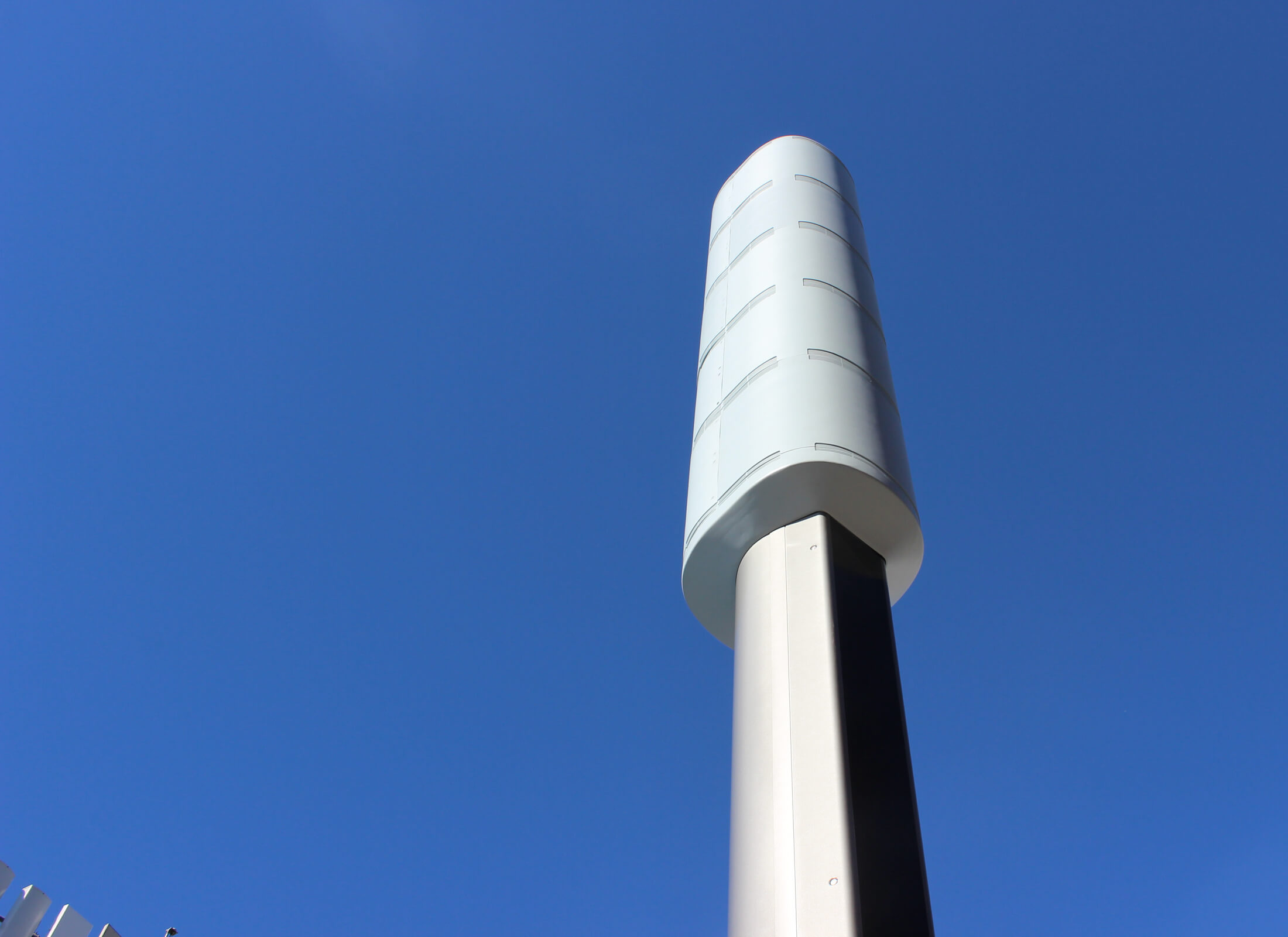
Over the past few months, a number of the new 32-foot-tall transmitters, the next generation model of the LinkNYC WiFi kiosks that replaced pay phones across the city, have been installed in Brooklyn. The NYC Link5G kiosks are part of a deal with New York City to expand high bandwidth cell and Internet service throughout the five boroughs. Brooklyn is set to get at least 147 of the transmitters, Office of Technology and Innovation Senior Director of Communications Ray Legendre told Brownstoner. The rollout comes at a time when 5G is becoming common in the borough, with carriers such as AT&T and Optimum having recently upgraded their networks.
The towers still offer free public WiFi for people to use on their own devices and via a screen on the towers’ column. The poles also come equipped with digital calling via a keypad and speaker, audio jack, a 911 call button, and a USB port for charging devices. But what makes them so tall are the four bays for 5G transmitters and one bay for high speed WiFi that fill the upper shroud. Private telecommunications companies, such as Verizon, will be able to buy the 5G transmitter bays to increase their own 5G coverage, providing a revenue stream for the consortium behind the towers, CityBridge, The City has reported. New York City also gets a cut of the proceeds ranging from 8 to 50 percent.
That height is something many Brooklynites have expressed unhappiness about. Many of the comments on social media question the Link5G design and locations where the towers have been installed.
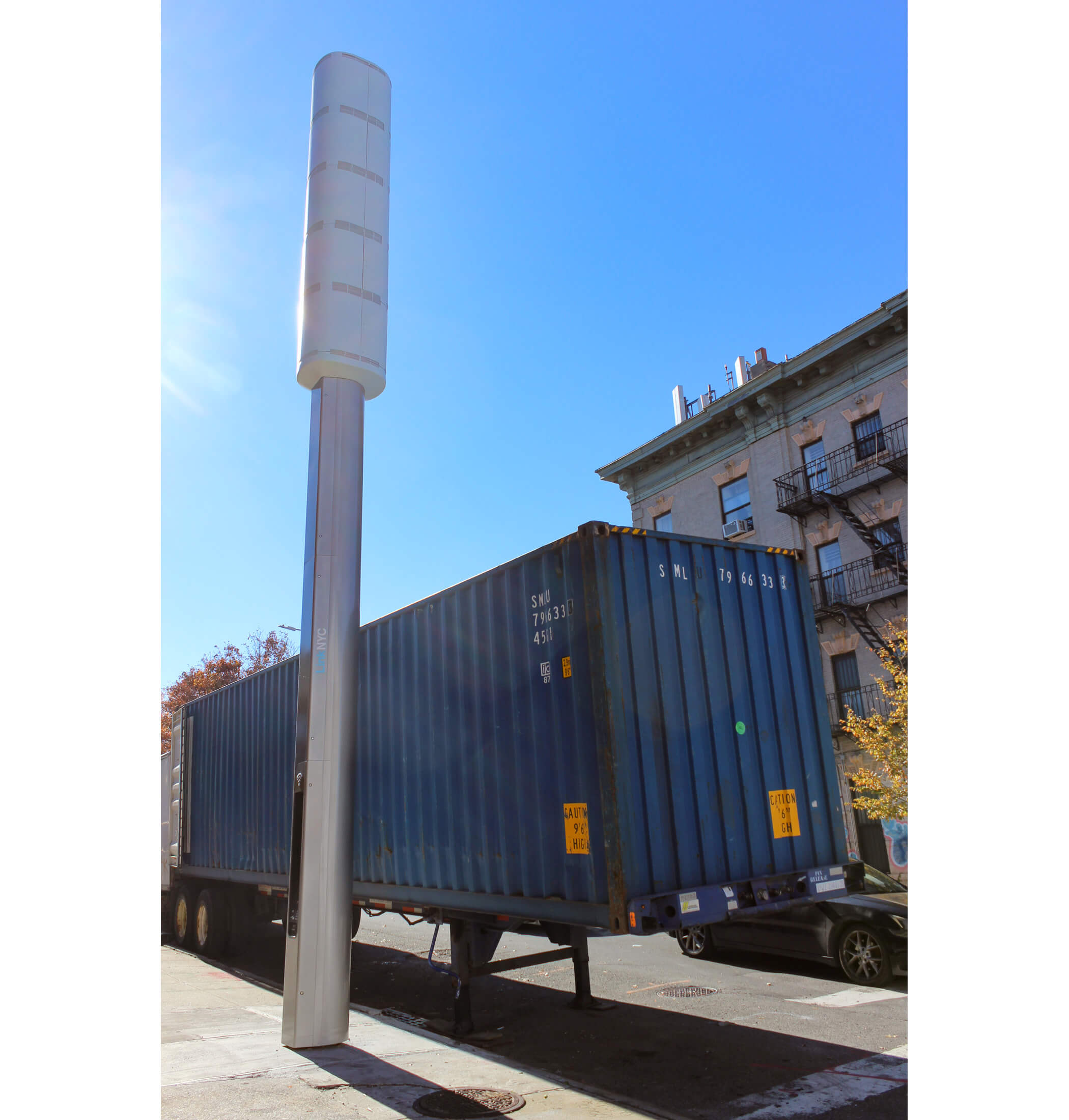
“It looks horrible on a residential block next to a major street, seems more appropriate in a parking lot,” one commenter wrote. Another said: “No one was informed that they were being installed, supposedly there is another being placed on Putnam and Nostrand. This is right outside the window by the school.”
Others have expressed safety fears over 5G technology and some residents are asking local officials to have them moved. Meanwhile others are coming up with creative solutions, such as dressing up the towers. “Maybe crochet a long cute sock to put over it,” one person wrote, while another suggested a contest be held to decorate them: “Like a dragonfly would be cool.”
According to Legendre, there was, and continues to be, “extensive community review and input for the Link5G program.”
“At this stage, the Public Design Commission has approved the design for Link5G. Now, the major telecommunication carriers can request Link5G sites, based on how to best optimize 5G cellular service where it’s most needed in the city. LinkNYC then works with OTI [Office of Technology and Innovation] to site the kiosks, in compliance with city rules and our franchise agreement with the city.”
The Public Design Commission is a city agency charged with reviewing permanent works of architecture, landscape architecture, and art proposed on or over city-owned property. Transmitters are, ultimately, regulated by the FCC and, at least in the case of cell phone towers, more likely to appear on roofs than city streets. 5G transmitters are also starting to roll out on top of streetlights and traffic signals.
Legendre told Brownstoner the Link5G design was approved by the Public Design Commission last year through a process that included public hearings and outreach to all community boards, borough presidents and council members.
The city’s design presentation says the buildout of the towers follows the footprint of NYC’s pay phones, and that all pay phones that were on the street as of 2014 are potential new Link locations. The document says there can’t be more than one tower per block, they must be 50 feet away from each other and they must be on one side of the street per block.
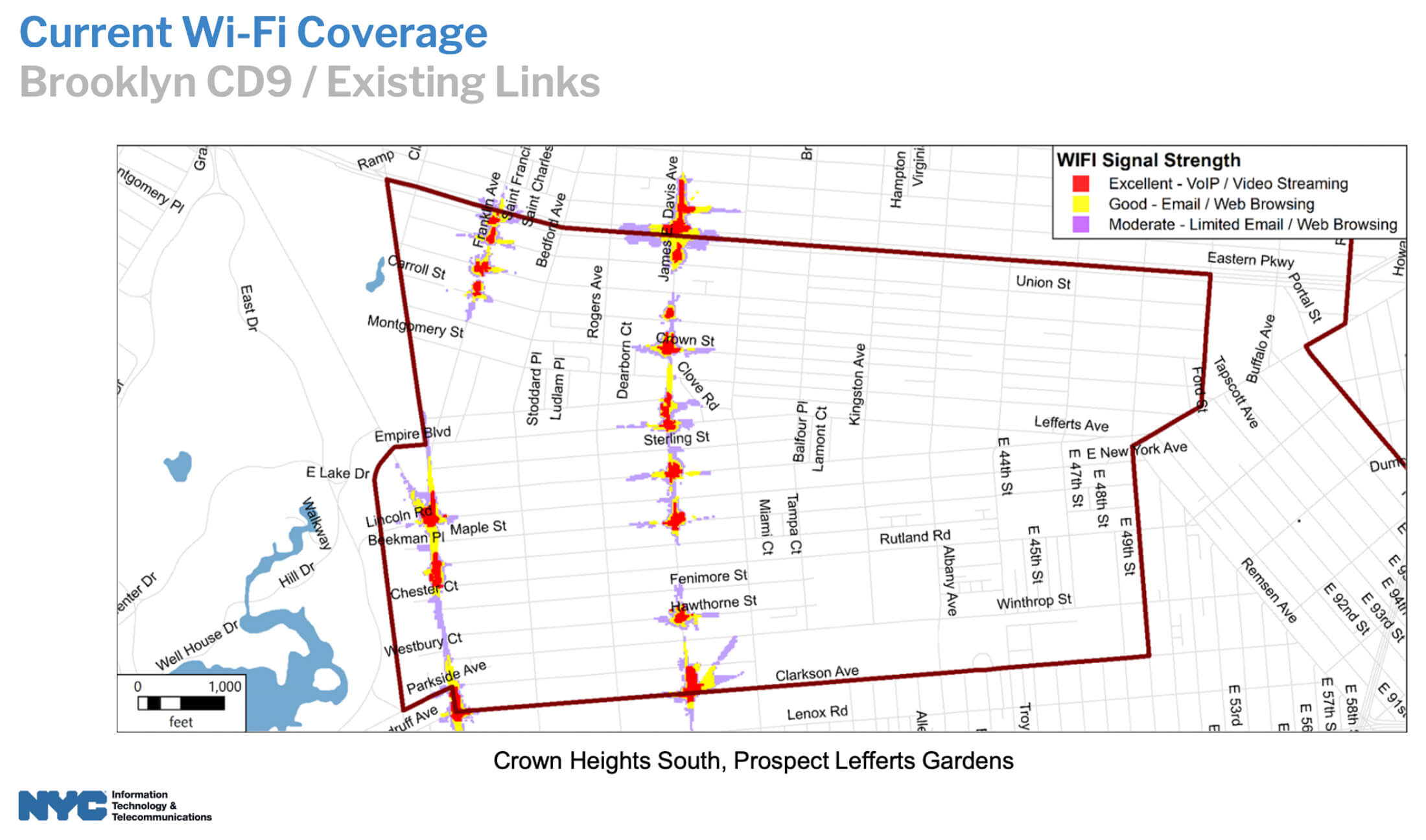
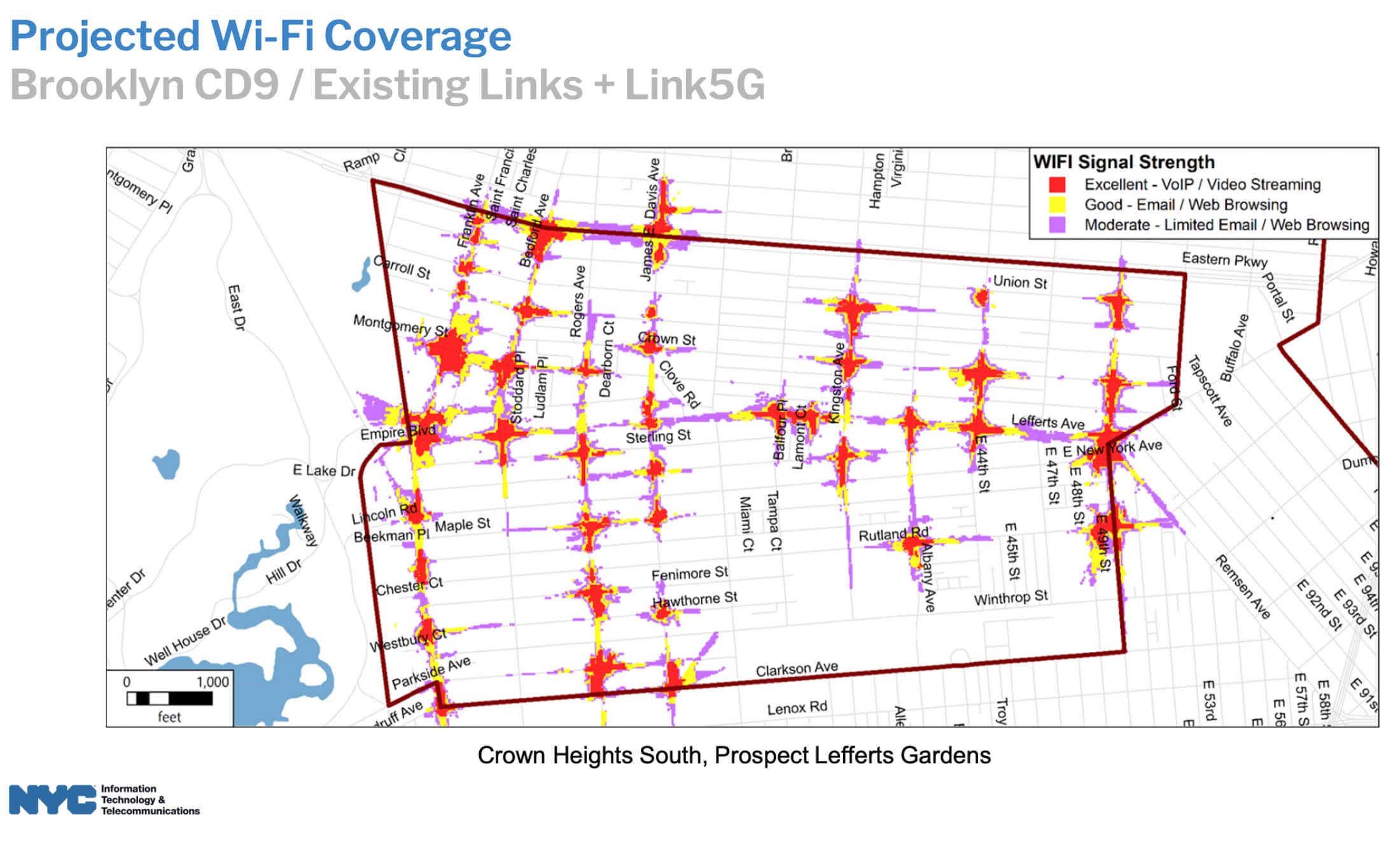
Locations for new Links that were not previously pay phones are brought to the local community board, council member, borough president and local business improvement district group for a 60-day comment period before the towers are built, the document says. “Link5G installations are sent out for 60-day review in batches by community board on a rolling basis once new potential sites are identified. All such sites are available on Open Data once the comment period is open.”
In 2014, the city first granted a franchise to CityBridge, a consortium of Intersection and ZenFi Networks, to work with its Office of Technology and Innovation to replace the pay phones on city streets with LinkNYC kiosks. CityBridge originally intended to make money from selling advertising on the kiosk screens, but revenues fell short of expectations.
A total of 2,000 5G transmitting towers will be installed across the city, with 90 percent going to the outer boroughs and above 96th Street in Manhattan in an effort to bring high-speed Internet to areas that have lacked it. Five years ago, nearly 20 percent of New York City households — more than 1.5 million people —- lacked both cell phone service and Internet, according to a 2017 study cited in the city’s 2020 Internet Master Plan. Five community districts in Brooklyn were categorized as “Internet deserts,” meaning 22 percent to 32 percent of households had no Internet service.
Legendre said the rollout of the new Link5G towers has a “true focus on equity.”
That focus follows the failure to achieve an even rollout of its original LinkNYC’s WiFi structures, which were overwhelmingly located in Manhattan. CityBridge had financial troubles in 2019 due to the unexpected lack of advertising and was unable to install a sizable number of the structures in Brooklyn and other boroughs.
Related Stories
- Public Review of Gowanus Rezoning Still on Hold as Judge Studies Legality of Virtual Process
- Sheepshead Bay Protected Bike Lane to Fill Gap in Waterfront Greenway
- Activists Rally to Deny Permit for Gas Vaporizers at National Grid’s Depot in East Williamsburg
Email tips@brownstoner.com with further comments, questions or tips. Follow Brownstoner on Twitter and Instagram, and like us on Facebook.




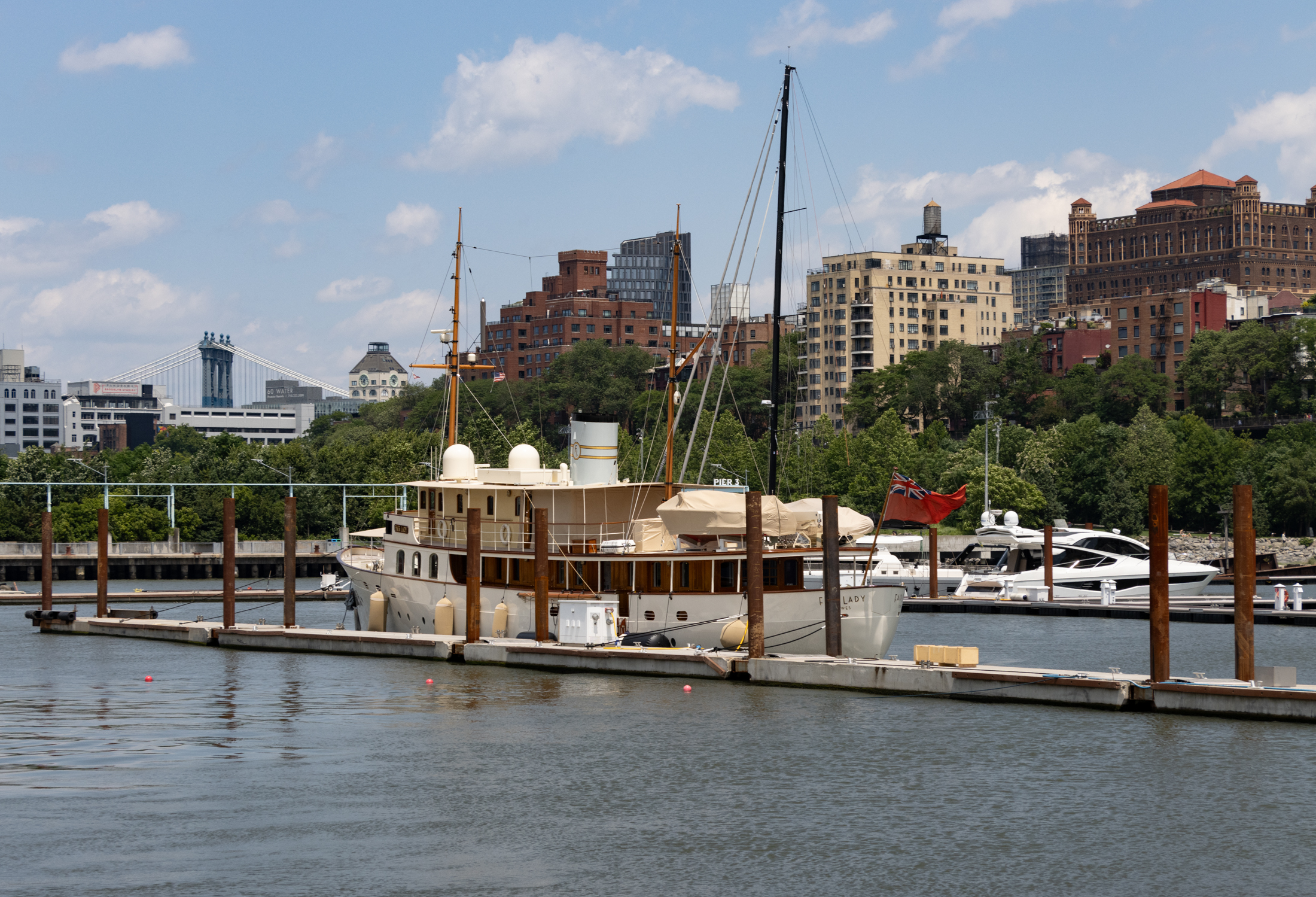
What's Your Take? Leave a Comment